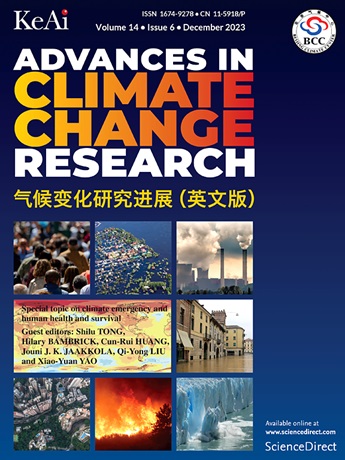Elevation-dependent shift of landslide activity in mountain permafrost regions of the Qilian Mountains
IF 5.2
1区 地球科学
Q1 ENVIRONMENTAL SCIENCES
引用次数: 0
Abstract
Increasing landslide activities in cold regions have been attributed to rising temperatures and consequent permafrost degradation. While previous studies have linked permafrost degradation to slope instability, the elevation-dependent effects of this degradation on landslide occurrences in the high-mountain regions of the Qinghai–Tibet Plateau (QTP) remain poorly understood, particularly concerning their spatial distribution and timing. This study addresses this gap by investigating the distribution and timing of landslides in the Babao River catchment, located in the southeastern Qilian Mountains of the northeastern QTP. Our results reveal a substantial increase in landslide events during the study period of 2009–2018: only 14 occurrences were recorded before and in 2009, 22 between 2010 and 2015, and 105 during 2016–2018. Notably, we observed an upward shift in the elevation of landslide occurrences, with an average increase of approximately 130 m over the ten-year period. Analysis of annual permafrost distribution maps indicates that this shift coincides with the rising lower altitudinal limit of mountain permafrost in the study area, likely driven by increased temperatures and precipitation. These findings highlight the critical role of elevation-dependent processes in influencing landslide dynamics under changing climatic conditions, particularly the transition from undisturbed permafrost to seasonally frozen ground at higher elevations. This study provides valuable insights for disaster prevention and mitigation in high-altitude regions, emphasizing the heightened risks posed by permafrost degradation under ongoing warmer and wetter climatic conditions.
祁连山山地多年冻土区滑坡活动的海拔变化特征
寒冷地区滑坡活动的增加归因于气温上升和随之而来的永久冻土退化。虽然以前的研究已经将多年冻土退化与边坡不稳定联系起来,但这种退化对青藏高原高山区滑坡发生的海拔依赖性影响仍然知之甚少,特别是在其空间分布和时间方面。本研究通过调查青藏高原东北部祁连山东南部八宝河流域滑坡的分布和时间来弥补这一空白。我们的研究结果显示,在2009年至2018年的研究期间,滑坡事件大幅增加:2009年之前和2009年仅记录了14起,2010年至2015年期间记录了22起,2016年至2018年期间记录了105起。值得注意的是,我们观察到滑坡发生的海拔高度呈上升趋势,在10年期间平均上升了约130米。对多年冻土分布图的分析表明,这种变化与研究区山地永久冻土的海拔下限上升相吻合,可能是由气温和降水增加所驱动的。这些发现强调了海拔依赖过程在变化的气候条件下影响滑坡动力学的关键作用,特别是在高海拔地区从未受干扰的永久冻土到季节性冻土的过渡。这项研究为高海拔地区的防灾减灾提供了有价值的见解,强调了在持续变暖和变湿的气候条件下永久冻土退化带来的更高风险。
本文章由计算机程序翻译,如有差异,请以英文原文为准。
求助全文
约1分钟内获得全文
求助全文
来源期刊

Advances in Climate Change Research
Earth and Planetary Sciences-Atmospheric Science
CiteScore
9.80
自引率
4.10%
发文量
424
审稿时长
107 days
期刊介绍:
Advances in Climate Change Research publishes scientific research and analyses on climate change and the interactions of climate change with society. This journal encompasses basic science and economic, social, and policy research, including studies on mitigation and adaptation to climate change.
Advances in Climate Change Research attempts to promote research in climate change and provide an impetus for the application of research achievements in numerous aspects, such as socioeconomic sustainable development, responses to the adaptation and mitigation of climate change, diplomatic negotiations of climate and environment policies, and the protection and exploitation of natural resources.
 求助内容:
求助内容: 应助结果提醒方式:
应助结果提醒方式:


